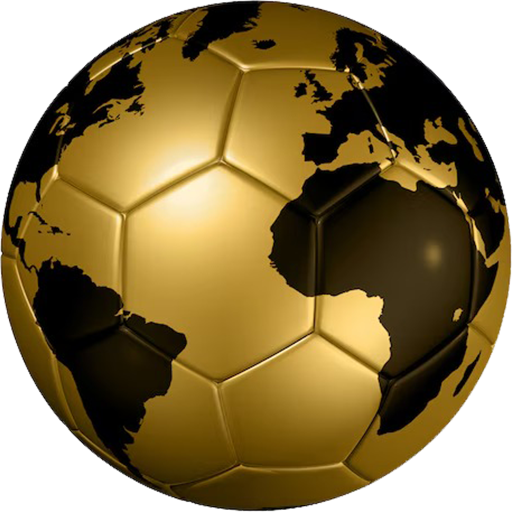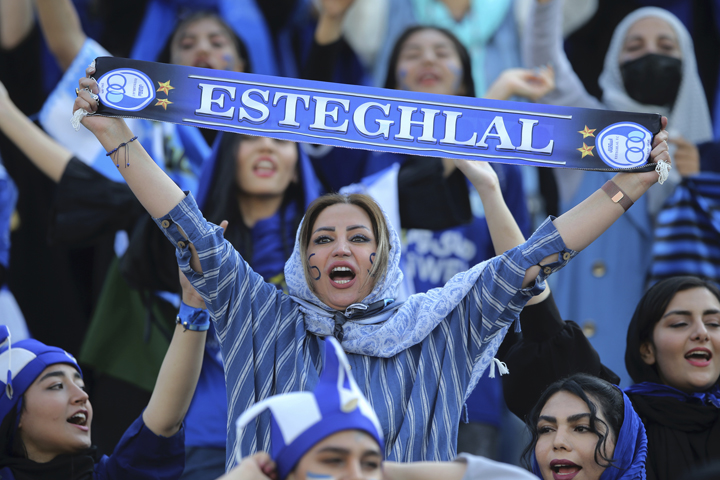This article has printed in “Tejarat_e_Farda” magazine, Dated: Sunday, September 22, 2024.
https://www.tejaratefarda.com/fa/tiny/news-47714
Was Transferring Esteghlal’s Shares to Persian Gulf Holding a Mistake?
The Unknotable Knot
Vahid Namazi, Journalist and Football Researcher
“Esteghlal Iran must be among the best at national, regional, Asian, and global levels… With the support of Esteghlal’s passionate fans, we will move toward sporting success on the global stage.”
On May 9, 2025, when the first board meeting of the Esteghlal team (not club) was held after the Persian Gulf Petrochemical Industries Holding purchased (through a debt swap with accumulated government receivables) 85% of its shares, Abdolali Ali-Asgari, seated as chairman of one of Iran’s two biggest football teams, uttered the above words. Sentences filled with repetition, promises, dreams, and unattainable goals—words that, in the forty-something-year history of Esteghlal and its archrival in red, have been parroted countless times by dozens of other managers!
Two days after this meeting, Esteghlal’s new owners severely limited the authority of Ali Khatir, the then-CEO, and appointed Ahmad Shahriari, Ali-Asgari’s friend and former CEO of Saba Battery Club, as the holding’s fully authorized representative, responsible for most matters, including appointments, changes, and financial payments. This significant shift signaled that Khatir’s tenure as CEO was becoming increasingly difficult and nearing its end. Shahriari’s arrival was a polite way of showing Khatir the door. It was natural for the new owner to want their chosen person as CEO, but appointing Shahriari as the holding’s representative and his management approach did not bode well for positive changes or brighter days! Those who remembered Shahriari’s time at Saba Battery knew he liked to interfere directly in team affairs, meaning Esteghlal’s CEO under his oversight would be little more than a signature machine.
On his first day, Shahriari deposited 50 billion tomans of the holding’s money into Esteghlal’s account to make a statement. Khatir, as CEO, decided to distribute this money among club members to pay 15% of the players’ and technical staff’s contracts, but this move, made without board approval, sealed his fate. Shahriari, upset by Khatir’s unauthorized action, ordered his dismissal in the final days of the previous league season. On May 13, it was announced that after the match against Tractor, an emergency board meeting was held at the Persian Gulf Holding’s headquarters, where three board members signed Khatir’s dismissal order. With Khatir gone, Farshid Samiei was appointed as Esteghlal’s interim head. Shahriari’s groundwork for unifying the management team had begun.
But the problem wasn’t just this. Evidence suggested that the Persian Gulf Holding, which acquired Esteghlal in lieu of debt, lacked any sporting or professional readiness, vision, or awareness regarding its new asset. The senior managers, having entrusted Esteghlal to their friend, adopted a “tool-oriented” approach to their new possession without consulting experts before making statements. Proof came from the chairman’s new remarks, wanting to attach the name “Persian Gulf” to Esteghlal Iran, intending to send the team to the AFC Champions League Elite as “Esteghlal Persian Gulf”: “It’s customary in the Persian Gulf Holding for subsidiaries to carry the Persian Gulf suffix.” These words sparked widespread domestic and international backlash. Anyone with even a basic understanding of sports or football, or familiarity with sports-related diplomacy, knew that such a change, beyond tampering with a historic name, could have serious negative consequences for Esteghlal. The result was Ali-Asgari’s retreat and an attempt to smooth things over.
But the controversies had already seeped into Esteghlal. Javad Nekounam, after clashing with Khatir, now had issues with the new management. The outcome was a loss of focus and the championship slipping away on the final day of the season. Rumors swirled. Many considered Nekounam’s departure imminent, but appearances suggested Shahriari wanted to bide his time and keep Javad, who enjoyed fan support, “for now.” Strongholds needed to be conquered one by one. On July 21, it was announced that the board meeting on July 10 (11 days prior) had resulted in Farshid Samiei’s appointment as CEO and the naming of Ahmad Shahriari (board chairman), Farshid Samiei, Mehdi Afzali, Mehdi Heidarzadeh, and Mostafa Karkhaneh as new board members. Now, the new team could fully control and manage its company with direct input from the holding. But was it possible to professionally manage a football club in Iran through a holding company? In Iran’s entirely state-dominated football, where government, state, and non-sporting officials’ interference has decades of history and structural issues plague it, could merely changing ownership and handing Iran’s biggest teams to petrochemical and banking consortiums solve their deep-rooted problems?
Why Haven’t Esteghlal’s Problems Been Resolved?
With the petrochemical holding’s men taking Esteghlal’s managerial seats, only one of the dozens of problems gripping the team—financing—was addressed. It was clear that while Farshid Samiei was named CEO, all decisions regarding the Blues were made by Shahriari, with Samiei essentially handling administrative tasks and signatures. At the season’s start, when Javad Nekounam’s continued presence was in question, Shahriari made no significant moves to resolve this major issue, believing a foreign coach would be more effective. However, Nekounam’s long-term contract kept him and Esteghlal together to start the season. Yet, when two Bosnian players appeared in Samiei’s office without Nekounam’s knowledge and signed hefty contracts, it became evident that trouble was brewing between Esteghlal and its coach. The season began in this bitter limbo; Nekounam won, drew, and lost, constantly feeling the shadow of dismissal. Reports claimed Samiei negotiated with Farhad Majidi. It was said the board (Shahriari) had decided on a foreign coach. A low-tier Bulgarian coach was even “linked” to Esteghlal, but public pressure kept him away. The Bosnian players, brought in by the Persian Gulf Holding’s decision, were so poorly chosen that after Nekounam’s disapproval, they, like many other foreign signings, received compensation and left Tehran without playing a single official match.
Clearly, the Persian Gulf Holding’s money has reduced Esteghlal’s “financial problems” this year, but that same money seems to have perpetuated mismanagement, internal conflicts, accumulated issues, and, worst of all, corruption and shady dealings. In short, the root cause of all these problems is Iran’s deeply flawed and toxic football structure. Money is good but not a cure-all. The corrupt foundation of Iranian football ensures that, no matter what happens, the same broken system persists. Direct interference by owners or their representatives in the technical staff’s work leads only to failure and doomed projects. From global examples like Manchester United, Milan, and Barcelona to relatively professional clubs in Greece—where a club president once stormed the pitch with a gun, believing his financial investment gave him the right to protest however he wished—it’s proven that upper management interference causes massive losses. Alongside this, a lack of financial transparency, absence of administrative hierarchy in a professional club, and, most critically, the “absence of a club” in Iranian football are the main reasons for our misery. If Esteghlal’s cries of despair are heard today, rest assured, Persepolis’s wails will follow tomorrow!
Hiding Old Wounds
The ownership change of Tehran’s two biggest teams was merely a “name change”—a transfer from one pocket to another. (I don’t consider any team in Iran’s league a football club, as what happens in Iranian football is far from the professional or even semi-professional standards of global club management.) The mandated transfer of state assets to quasi-private entities is, at best, a temporary fix that won’t fulfill the goals of policymakers or politicians in the long run, nor satisfy the dreams of football fans hoping to approach global standards.
Just months after the transfer, neither Esteghlal nor its great rival Persepolis have the most basic requirement for hosting a football match: a stadium for domestic and international opponents. When the entirely non-private Azadi Stadium is buckling under government-led renovations, and Tehran’s teams are begging to rent pitches in nearby cities, can even the world’s largest holdings be expected to solve Esteghlal and Persepolis’s problems? In Iran’s chaotic, octopus-like team management structure, where everyone seeks backdoor entries to siphon more money and scam football, what major subsidiary company, even with a sound investment structure, can justify the colossal waste of money poured into these teams? What auditor, inspector, board, or assembly operating under commercial law and professional ethics would fail to react to suspicious multimillion-dollar payments to obscure European players who haven’t played a single minute for their owned team, or rubber-stamp their appointed CEO’s actions?
The seventy-headed dragon of corruption in Iranian football is so deeply rooted that superficial changes like mandated ownership transfers won’t cure its ailments. Corruption, like flowing water finding a hole, seeps into football wherever it can. The reason? A lack of structure and law. Change owners, names, and managers a thousand times—the problem remains. Without a foundation, the façade will soon collapse!
“Pain” Hurts from Every Angle!
Iranian football’s economy, like much of the country’s economy, lacks revenue-generating potential and global connectivity. Beyond the heavy shadow of sanctions preventing national and club football from collecting dues from global and continental bodies, football in Iran’s economic cycle is merely a “costly” entity, not a “revenue-generating” one. The greatest flaw of mandated ownership transfers lies in this imbalance. According to the latest financial statements, Esteghlal has nearly 800 billion tomans in debt, which will soon grow. Can the Persian Gulf Holding, as Esteghlal’s owner and financial operator, generate revenue from its asset? I’ve written before that a football club’s three main, sustainable income sources are “television broadcasting rights, sponsorships, and matchday revenue.” Where in this country is there a “platform for sustainable revenue sources” for Esteghlal to create wealth?
The only thing the recent ownership and management changes have facilitated for Tehran’s two popular teams is easier access to financial sponsors. Esteghlal and Persepolis, once fed by government and state company funds, now breathe with money from the “Persian Gulf Holding” and a “multi-bank consortium.” On the surface, attracting sponsors seems less troublesome. However, owning a football team to act as its sponsor and cover its annual costs is a toxic, bizarre concoction unique to Iran! Globally, only about 40% of professional clubs’ revenue comes from sponsorships. The remaining 60% comes from selling TV broadcast rights (43%) and direct/indirect matchday services leveraging the club’s brand (ticket sales, jerseys, merchandise, plus academy, football schools, stores, restaurants, and hotels under the club’s name, about 17%).
Forget reaching the English Premier League’s revenue, the world’s richest league with over €11 billion across three seasons (2022-2025)! Can the grandiose, multi-trillion-toman Persian Gulf Holding, led by a former IRIB head who holds the keys to the broadcast revenue vault, muster the courage to demand Esteghlal’s rightful share of the massive TV broadcast income from his former organization? Or, if pressed too hard, would it face scrutiny from higher authorities?
In an era where Instagram pages selling football jerseys generate significant revenue, can Esteghlal, a company listed on Iran’s stock exchange, establish a store worthy of its name to sell even one official team jersey? Unable to secure a rented pitch for hosting guests, in which stadium should Esteghlal plan for matchday revenue or lease its stadium’s name to a brand (even a domestic one), as all professional clubs worldwide do, to spend the proceeds?
Though I’ve never abandoned my passion for supporting my beloved team, my years as a journalist and researcher have led me to view football beyond fandom. The deeper I go, the more I realize our “main pain is not wanting,” not inability! There are numerous small and large examples in Iran of wanting and succeeding (even in sports and football, like Bam Khatoon FC), which have come close to global models or set themselves on that path. But what has persisted in Iranian football over decades, especially the last 10 years—despite all progress, efforts, and achievements—shows a collective resolve to not want. Until this mindset changes, no team’s problems in Iranian football will be solved.

